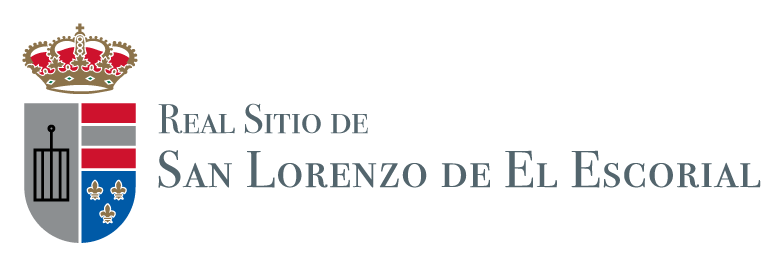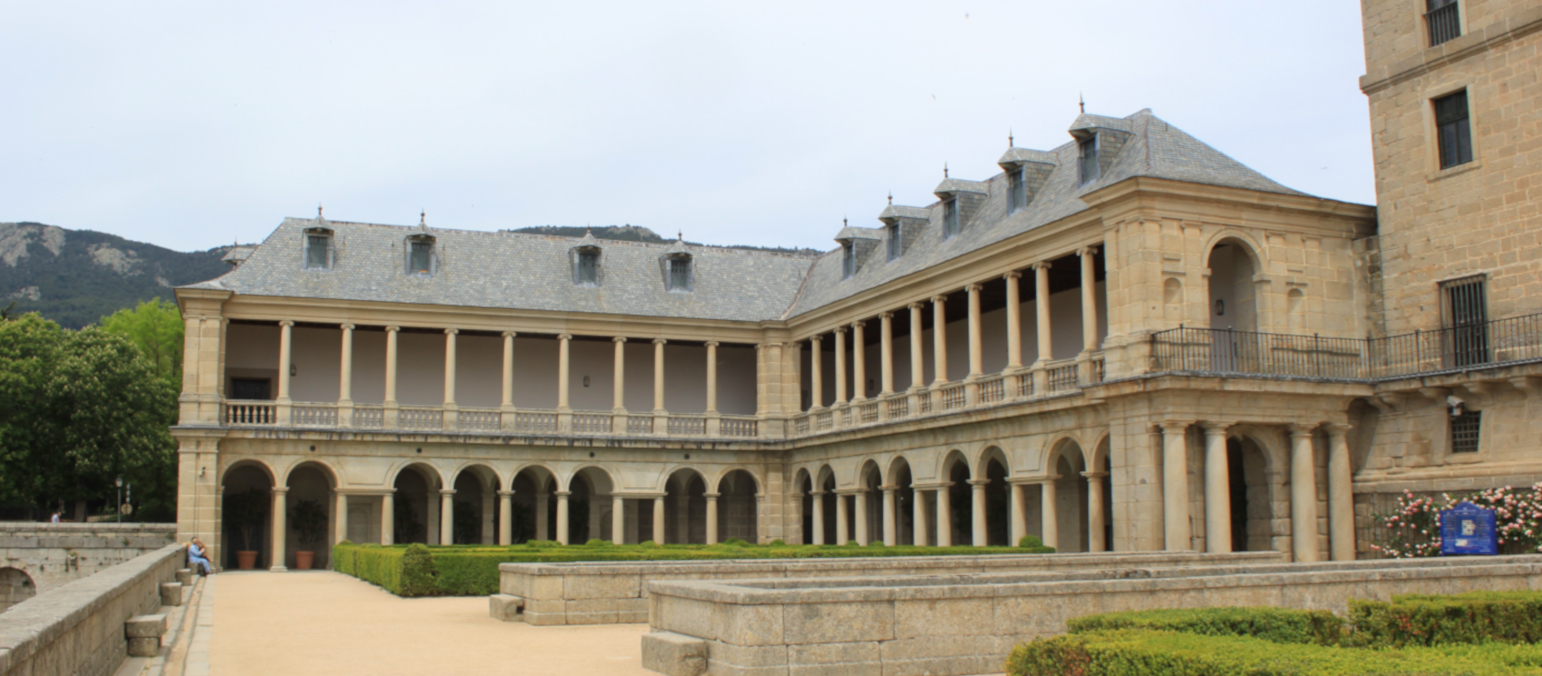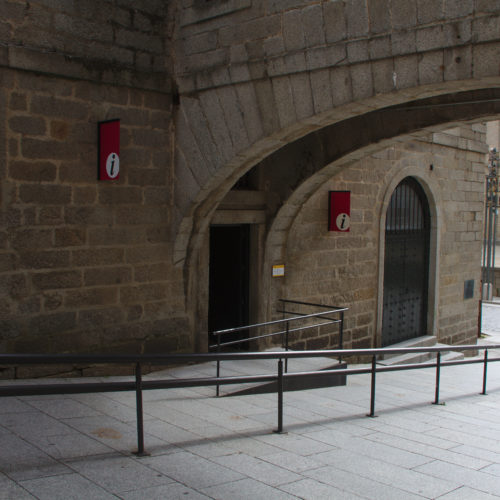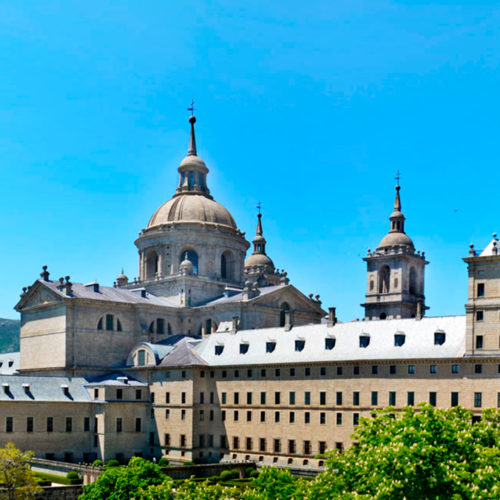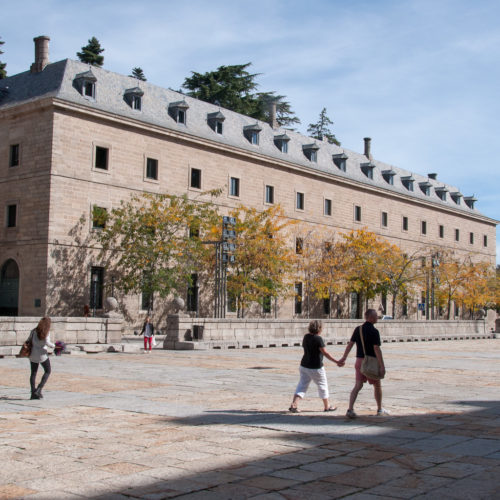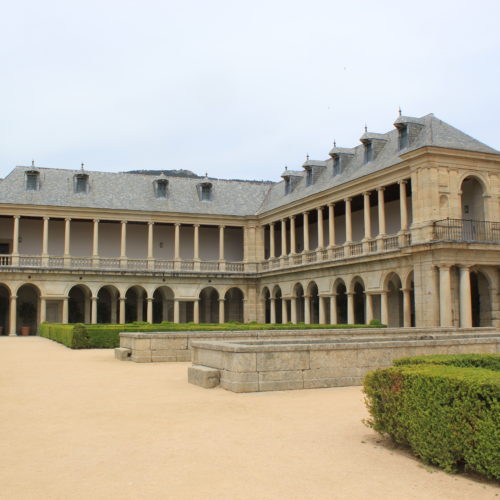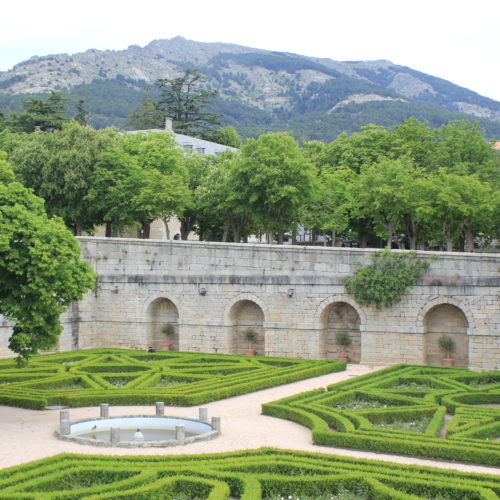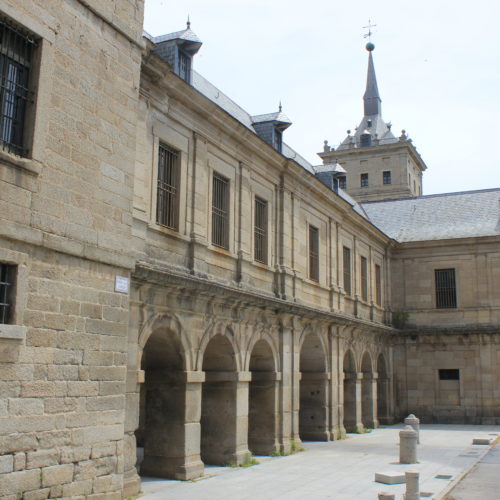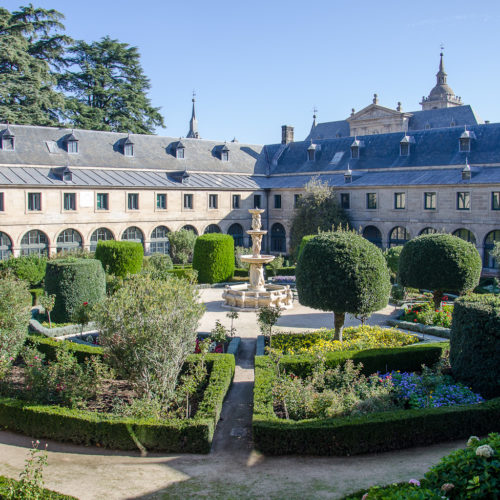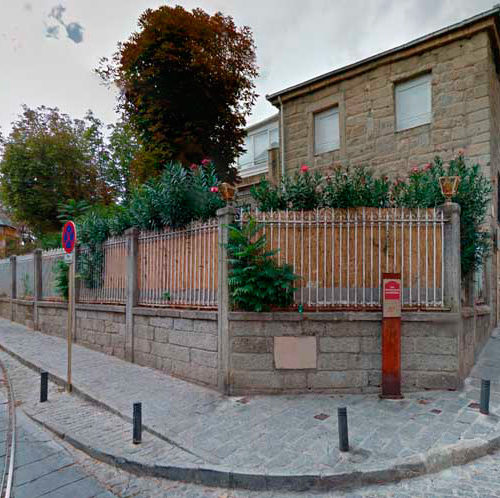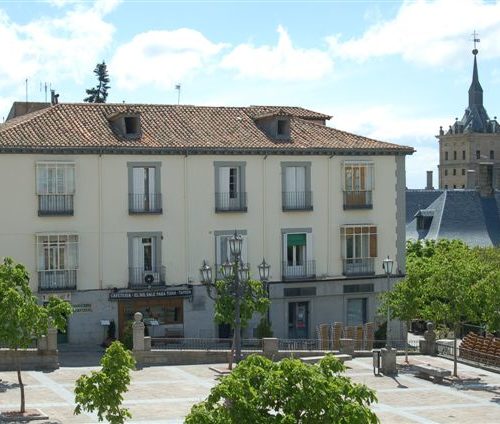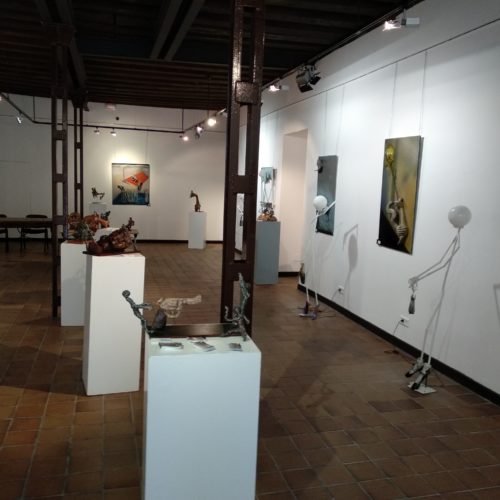This route will give an insight into the Royal Site of El Escorial in the 16th Century.
This tour around the 16th century begins at the Tourist Office, heading out towards the large open space known as La Lonja (1), bounded by a small wall. On the other side is the northern façade of the building which houses the entrance and ticket offices of the Royal Monastery of San Lorenzo de El Escorial (2) which can be visited. Continuing to the right along the façade you will reach what is known is the Stone of Santa Teresa (3) at one corner of the landmark.
The entrance to the Monastery Basilica is on the western façade (4). When you leave the building, head to the entrance to La Lonja opposite you. Cross to the other side and continue left as far as the arches of the Arcos de la Compaña (5). Just below the arcade on the left is the entrance to the Friars’ Garden (6), for which there is no entry charge. You will enter via the Monastery Infirmary, with the Convalescents’ Gallery (7) visible from the gardens. The gardens themselves offer outstanding views. To the right is the lake (8) which stores the water used to irrigate the Friars’ Kitchen Garden (9) below. Look to the right, meanwhile, and you will see the building that houses the Snow Shaft (10).
Leaving the gardens on the left you will reach a viewing platform (11), which is the perfect spot to take a photo of the southern façade of the Monastery with the gardens at its feet.
Head back a short way towards the arches and up the Paseo de los Alamillos promenade as far as the House of the Company (12), which is now the Escorial-María Cristina Royal University Centre, with the Adolfo Suárez Park opposite. On the other side of the park two columns mark the entrance to the Woodland of La Herrería (13), with a short circular path route running around it.
Back at the entrance, head down Calle Leandro Rubio, the main street of the beautiful neighbourhood of El Plantel (14), named for the trees that Felipe II ordered to be planted, including species such as holm oaks, chestnuts, oaks and hazelnuts.
At the end of Calle Leandro Rubio head down Calle Floridablanca, with the famous House of Jacometrezo (15) on the left, the oldest in the town. This stone building dates from when work on the Monastery first began. Located right on the edge of El Plantel, it was home to the Italian sculptor Jacomo da Trezzo.
Head down Calle Floridablanca, and through some windows on the right you will see some beautiful, overgrown ruins with huge chimneys rising from outside what was once the Slate House (16), at the vertex of La Lonja, and which formerly provided accommodation for the gatekeeper of the King’s kitchen, the servants and the convent’s wicker-worker. Further along, as you reach Plaza de la Constitución, on the corner with Calle Floridablanca stands the Doctors’ House (17).
Continuing down Calle Floridablanca, on the right you will come to the Houses of Offices. The first of these is in fact the Second House of Offices (18), home to the Chapel of Our Lady of Grace, the patron saint of the town, in whose honour a pilgrimage declared a Festival of National Tourist Interest is held on the second Sunday in September. Further down, on the other side of Calle Grimaldi you will reach the First House of Offices (19), which contains a number of exhibition rooms and a functions hall which serves as the venue for various types of event.




